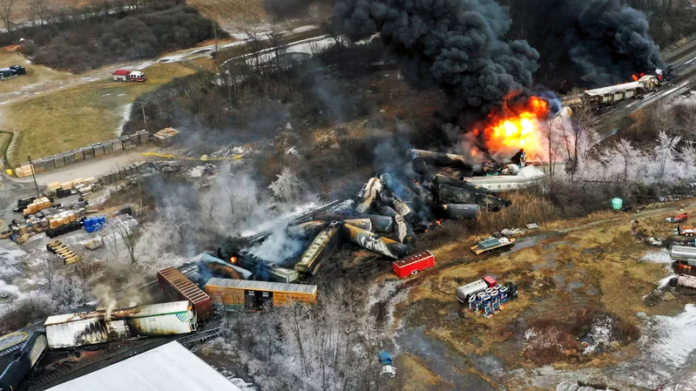The railroads were in crisis. Supply chains were a mess and prices were climbing fast. Thousands of railcars filled to the brim with American war munition were stuck at the ports, waiting to be unloaded onto ships and sent to Europe. There was a shortage of rail cars resulting in major delays in getting normal freight from one city to the next. Rail workers threatened to strike against brutally long hours. And then Congress intervened.
This is where the story will start to sound increasingly unfamiliar. Congress intervened to guarantee rail workers an eight-hour workday despite vicious opposition from the industry barons. And most astonishingly, on December 28, 1917, President Woodrow Wilson issued an order to nationalize the railroads.
They would remain under federal control for three years before being handed back to the billionaires in March of 1920.
When The U.S. Railroads Were Nationalized
Federal control extended over steam and electric powered railroads, terminals, sleeping and parlor cars, private cars, elevators, warehouses, and telephone and telegraph lines.
Changes cascaded across the rail industry in the three years it was under government control. Competitive waste like duplicate lines were eliminated, uniform passenger ticketing was instituted, and more than 100,000 new, standardized freight cars were built. Wages rose and the eight-hour workday was formalized for two million railroad employees.
But, it was always the intention of pro-capitalist politicians like Woodrow Wilson to return the railroads to private hands. When creating the U.S. Railroad Administration, the body that would oversee this new “nationalized” freight system, a promise was issued to the rail barons that within 21 months of the war ending, they’d get the keys to the system back. In the meantime, they’d get paid the average net income they’d made between 1914-1917. The government, in essence, rented the railroads for three years.
In 1918, nearly 99% of the more than 300,000 railroad workers voted to keep the tracks nationalized. The railroad union’s advocacy for keeping the railroads public inspired coal miners whose own union voted to nationalize the coal industry in 1919.
It is not an accident of history that Woodrow Wilson took this extraordinary step in December of 1917, just two months after the Russian working class seized control of the levers of power. The socialist revolution in Russia sent a tidal wave of inspiration across the globe, inspiring workers in nearly every country to take up the fight against their own ruling class.
Woodrow Wilson didn’t radically transform the railroads to benefit a single working-class person, he did it to ensure weapons got to the front lines of the war as quickly as possible. And not just the front lines of World War I, but the front lines of the Russian civil war where Wilson had deployed 13,000 soldiers to help crush the revolution.
This is not the type of nationalization we want today, but even this limited and poorly motivated experiment demonstrates how much more efficiently our railroads can run when they’re taken out of private hands.
Take The Tracks Into Public Ownership
The disastrous train derailment in East Palestine, Ohio highlighted for millions of Americans just how dangerous the railroads have become. Decades of cost-cutting and deregulation have created an explosive situation for rail workers and the communities that live along the tracks.
A two-person crew driving a nearly two-mile-long train carrying 115,000 gallons of highly toxic chemicals sounds like a recipe for disaster, but it’s a shockingly ordinary scenario. The U.S. averaged roughly three train derailments per day in 2022.
And all this heightened risk isn’t producing higher productivity. The only thing it produces is higher profits. In fact, the railroads are moving 5 to 10% less freight than they did 16 years ago – but rail executives’ profits have nearly tripled in the last several decades.
It’s time that rail unions actively take the lead in fighting to bring the railroads into public ownership as they did in 1918.
Railroad Workers United (RWU), a caucus of rank-and-file rail workers across the country, have adopted a resolution calling for exactly that. Similar resolutions should be put forward in rail union locals across the country, and rank-and-file rail workers wanting to fight should consider joining and building RWU into a fighting, cross-craft reform caucus with strong democratic structures.
Wrenching the railroads from the hands of billionaires will take a lot more than union resolutions, though. We will need a genuinely titanic struggle that includes the wider labor movement as well as communities affected by dangerous derailments. We cannot win a transformation this big without mass mobilizations and, crucially, strike action.
We also need to be crystal clear every step of the way about the type of public ownership we’re demanding. We want public ownership on the basis of workers’ control, not control by bureaucratic, capitalist government agencies or “worker-management partnerships.” Rail workers are far more familiar with the ins and outs of the industry than billionaire executives.
Fighting to win genuine public ownership of the tracks, on the basis of workers’ control, could be an inspiration to workers in all other major industries, as it was in 1918.


